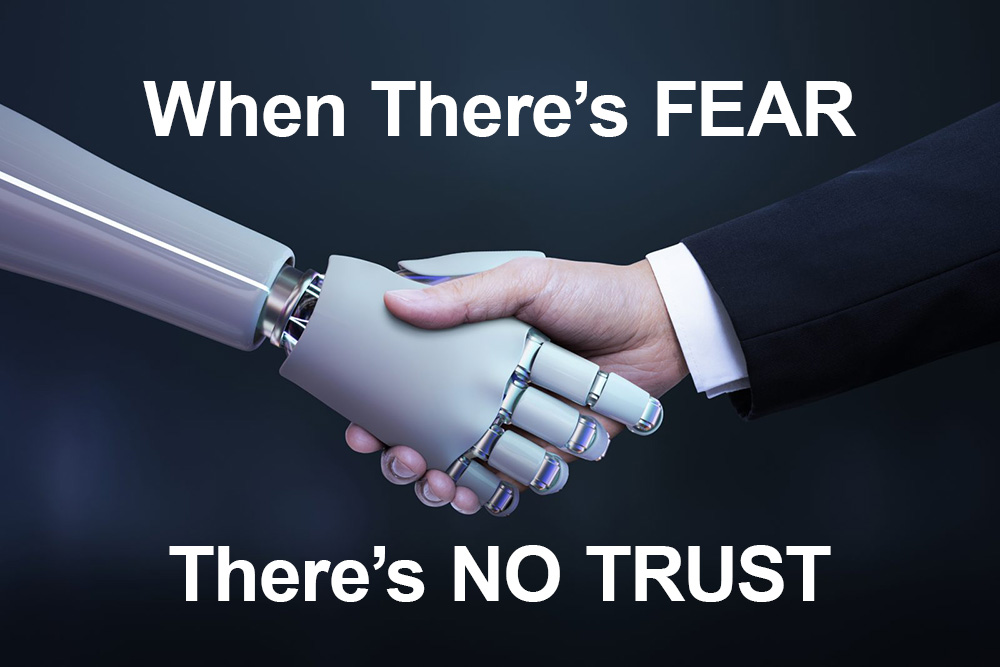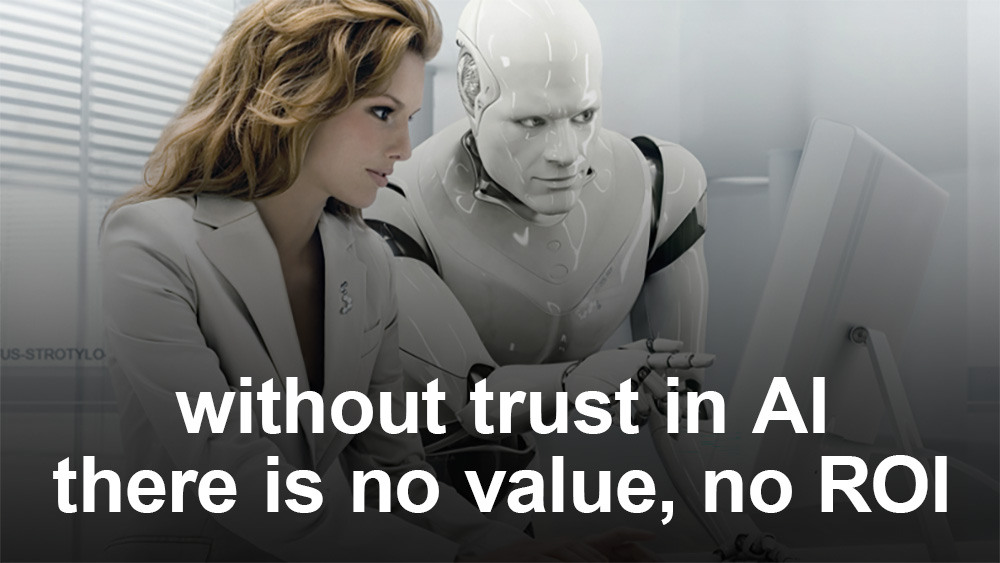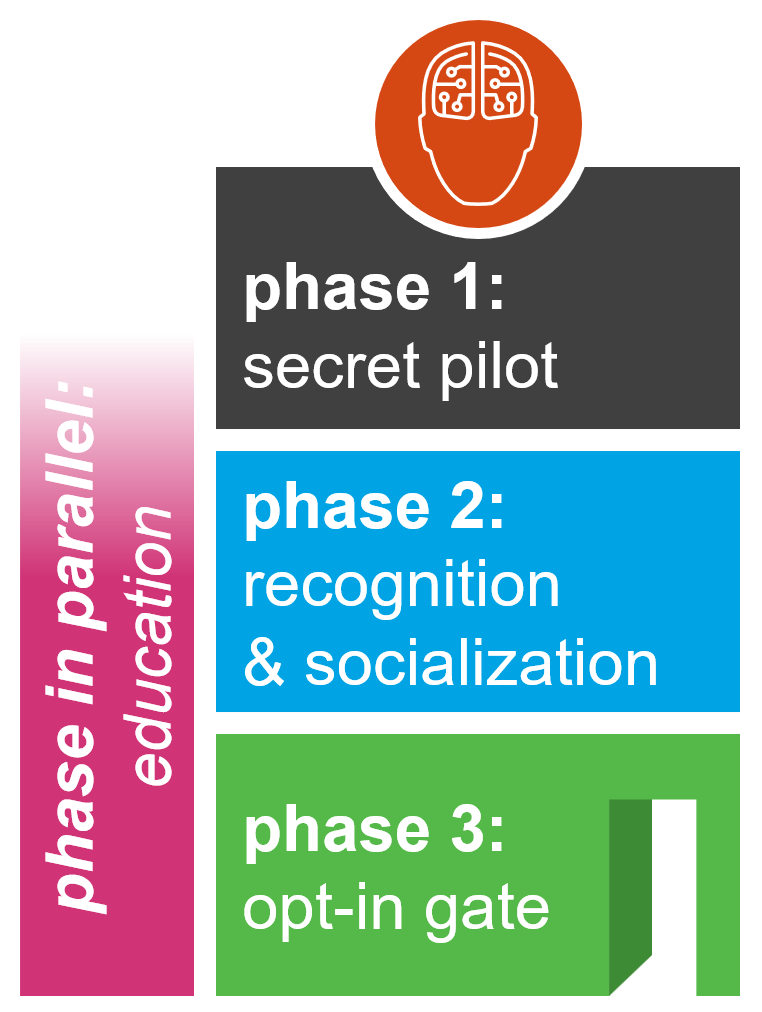Successful Enterprise AI Adoption in 3 Steps
Artificial intelligence (AI) is quickly becoming standard across numerous industries, with more businesses looking for ways to implement AI into their daily operations. However, adopting AI in business is not always viewed as a positive change by everyone it impacts.
Studies show that Americans fear the long-term impacts of advanced AI – will it become too intelligent? Take over my job? Will I know how to work with this technology? In fact, 34% feel that the impact of high-level machine intelligence on humanity will be negative, with 12% expressing that the future will be “very bad, possibly human extinction.” This fear is even more imminent with the advent of large language model (LLM) like ChatGPT (OepnAI), LLaMA (Meta), LaMDA (Google), etc.
As more companies adopt advanced technology such as AI and machine learning – and as these tools become more user-friendly with intuitive user interfaces – employees who are already distrustful of this technology may feel that it is beyond them, and find these applications frightening. What’s most daunting is they don’t even know what AI is or what it really means to use them.
The fear of advanced tech tools like AI not only rises from the great potential of AI – which can and will definitely surpass ours someday – but also because of the black-box nature of this technology, as it is natural to fear things that we don’t understand and can’t control.
So, how can businesses help their employees overcome those fears, and ensure seamless integration of AI to remain competitive in the increasingly digital world? What must be done to reassure employees, while still ensuring the business reaps the benefit of AI and evolves as necessary?
Understanding AI: Who’s Learning from Whom
The first thing businesses must do to help their employees work with AI in daily operations is to explain and define AI, along with its true capabilities. Oftentimes, an individual’s understanding of AI comes from science fiction. These fantasized notions of AI paint a picture of AI as a super-intelligent being that will make humans obsolete. With these misconceptions, it’s truly challenging when trying to help people overcome the fear of AI in the workplace, and furthermore, build trust in AI.
In reality, AI is a convenience and helps us save time on standard, everyday tasks. For example, it is more convenient to speak into our phones so Siri can look up something on Google. Previously, we’d type our questions into the phone, or into a search engine. This virtual assistant, which is an example of a cognitive AI, saves us time and increases our productivity at work.
Once people understand that concept, it’s important to explain how AI learns and becomes intelligent. For AI to learn and become smarter, it requires a constant stream of data. But where does that data come from? Humans! They come from past human decisions and actions.
Essentially, AI is learning from what a human would have done in a particular scenario. AI learns through repetition and experiences. For example, the more that you shop online, the more accurate a recommendation system, which is an example of a personalization AI, can make recommendations on what you are likely to buy.
The intelligence of AI really comes from data that represent the collective intelligence of human experiences – data that is generated by past human decisions and behaviors, not machines. We’re essentially teaching AI how we like and want things to be done whenever we use such an AI system.
The same approach can be applied in the business world. For example, sales teams can take advantage of AI-powered opportunity detection tools. These tools help the sales team – not replace them. These AI-powered tools can analyze CRM data and find opportunities that are best and most appropriate for the sales team to pursue.
Previously, sales would have to look through these types of databases themselves and then decide which opportunities are worthwhile. With AI, the list of potential leads can be curated. Sales can then go through and note which ones are good leads, and which ones are not applicable. Subsequently, AI can then learn and make adjustments to recommend more accurate and applicable opportunities in the future.
This saves time and alleviates the need for sales teams to comb through large amounts of data, which is probably not something that sales enjoy. Instead, sales can focus on contacting prospects, setting up meetings, and building meaningful relationships. AI can help us automate repetitive tasks that can be mundane and boring, allowing us to do more of what we do best.
Deploying AI in 3 Phases
Every organization has employees who are highly tech-savvy or are interested in experimenting with and using new technologies in their daily operations. Likewise, there will also be employees who are more conservative and want to maintain the status quo.
Businesses need to account for both mindsets to ensure a seamless AI implementation process. Successful adoption does not require an organization to deploy AI to every single employee all at once. Instead, it’s more effective to opt for a smaller rollout to a small team at the beginning.
Following the following 3 steps will ensure the best odds of a successful deployment of AI.
Phase 1: First, businesses must design the initial team for AI rollout. This requires finding those employees who are top performers and are also tech-savvy workers. By design, this initial pilot team will likely reap the most benefit from AI due to their tech savviness and propensity to experiment with new tools. Since they are top performers already, they are likely to further outperform with the help of AI.
However, technology deployment in any organization is never perfect and rarely successful in one shot. Since the initial rollout audience is only a small team, this limits the negative side effect to a minimum as the organization learns and perfects the deployment to a larger audience.
Phase 2: The second step is to disseminate success broadly. After the pilot team demonstrates success with the initial AI rollout, senior leadership must help promote that success and make it visible to the entire business. The key is for this team’s performance to be visible to everyone else: show all employees how efficient and effective AI can be.
Phase 3: Finally, businesses need to create a small exclusive gateway for every employee to opt-in to the AI adoption program. This will include training and the proper education for the employees to fully leverage the AI tool. All employees can be accepted into this AI adoption program for their needs, but a little exclusivity will create the desire to join.
Conclusion
Employees need to be mentally and emotionally ready to accept AI as a tool for helping them with their jobs. When you design the AI pilot team to be successful and have top performers and willing employees utilizing AI, the rollout process will run much smoother.
With a better understanding of the tech itself, employees can better recognize its limitations and be more realistic about tasks it can automate. This can help employees ensure they’re focused on developing skills for the tasks AI won’t touch in the near future. For example, anything that involves human interaction, critical thinking, empathy, etc.
Fearing the unknown is common. But educating employees on the benefits of AI and what it actually entails will be instrumental in overcoming that fear. Embracing AI in the workplace is not the first step of machines “take over the world,” but is rather a key step forward to helping employees unlock their own potential and further the business world as a whole. And this start with building trust in AI.
DISCLAIMER: The content of this article was first published by CMS Wire. Here is the latest revision and a current rendition of the raw manuscript submitted to the publisher. It differs slightly from the previously published version.





